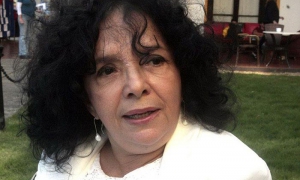
From October 28 to November 10, the 28th edition of the “Alicia Alonso” Havana International Ballet Festival took place in the Cuban capital.
It seemed impossible: first a failure in the National Electric System, which left almost the entire country without electricity for several days. Then a hurricane wreaked havoc, and once again left a large part of the country (especially in the West) with serious problems in the electrical system?
It is easy to infer, then, the many affectations that the “blackouts” and the severe atmospheric inclemency entailed.
That is why, during the closing gala at the Sala Avellaneda, I remembered that very humble-looking lady who, in the midst of a darkness that seemed eternal, intercepted me one evening, and almost imploringly asked me: -We will have a Festival, won't we? Don't suspend it, now more than ever, we need it more than ever!
And yes, despite so many setbacks, shortages and shortages of all kinds, there was the “Alicia Alonso” Havana International Ballet Festival.
There were two theaters: The National -with its Avellaneda and Covarrubias halls- and the Martí, working almost in unison. And the dance-loving public, which looks forward to the Festival every two years, was able to enjoy 20 shows in ten days of performances, including 36 new works, six of them world premieres, and 30 premieres in Cuba, either partially or in their entirety.
What a pleasure it was to meet again with such endearing figures of great significance in dance, like England's Maina Gielgud, on her fourth visit to the island! Or having the privilege of attending a class, a rehearsal, or simply listening to the thousand and one anecdotes of Azari Plisetsky, a Russian by birth who belongs to us in his own right, and without whose name the history of Cuban ballet cannot be written.
We had the performance of Cuban dance groups: the National Ballet of Cuba (BCN) -host of the event-, Contemporary Dance of Cuba, the National Folkloric Ensemble, Lizt Alfonso Dance Cuba, Micompañía, the Malpaso Dance Company, Otrolado Dance Company and representatives of the Camagüey Ballet and the Laura Alonso Ballet. There were also two foreign companies: Anajnu Veatem-Jewish Dance Company in Mexico, and the Colombian Ballet Company, Incolballet.
We enjoyed again the art of admired dancers, such as the Russian Semyon Chudin, from the Bolshoi Ballet, with his natural elegance of authentic noble danseur; or the explosive Daniil Simkin; and the Spanish Joaquín de Luz.
We enjoyed the debut on the island of notable international figures such as the Mexican Elisa Carrillo or the Brazilian Marcelo Gomes; and dancers from the Mariinsky Ballet and the Mikhailovsky Theater, both in St. Petersburg; from the Bordeaux Ballet and the Preljocaj Ballet (France); from the Dresden State Opera Ballet, the Bavarian State Ballet and the Berlin State Ballet (Germany); from the Zurich Ballet, Les Grands Ballets Canadiens, the Birmingham Royal Ballet, the Ballet del Teatro Teresa Carreño of Venezuela, the Ballet de Monterrey, the Ballet Nacional de Panamá and the Ballet Concierto de Puerto Rico, among other artists from Austria, the United States and the Ukraine.
It was an intense Festival that allowed us to embrace again Cuban dancers who have triumphed in other countries: José Manuel Carreño -of great dance progeny, one of Cuba's great contributions to world ballet-; the charismatic Víctor Gilí (another of great lineage, today master and director of Ballet Concierto, from Puerto Rico); Yosvani Ramos, current artistic director of the Monterrey Ballet; Patricio Revé, first figure of the Queensland Ballet, in Australia; Esnel Ramos, of Les Grands Ballets Canadiens; Michel Parreño, of the Monterrey Ballet; Jonhal Fernández, of the Spartanburg Ballet, in the United States; or Jose Iglesias, of the Ballet of the National Theater of Belgrade, in Serbia.






